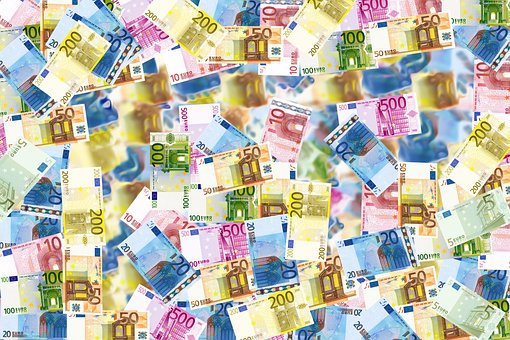 Since the United States has been around for a couple hundred years, it has changed the type of bills and coins in circulation. Some are familiar to us but many if you saw them, you'd think were fake.
Since the United States has been around for a couple hundred years, it has changed the type of bills and coins in circulation. Some are familiar to us but many if you saw them, you'd think were fake.1. The United States issued $1.00 silver certificates from 1878 to 1964. These bills could be turned in for $1.00 worth of silver. Some of the bills had "One dollar in Silver payable to the Bearer on demand."
One interesting fact about this particular bill is that the ones issued between 1886 and 1891 bore the picture of Martha Washington, wife of George Washington. This was the first form of paper currency in this country to have the picture of a woman.
2. Back in 1775, the Continental Congress issued its own Continental currency because the 13 unified colonies needed some form of common money. Unfortunately, this currency was only backed by the word that it would be repaid by money collected via taxes rather than being by backed by gold or silver. The money died in 1781 because there was no standardized set value because it varied from colony to colony. In addition, the British flooded the colonies with counterfeit Continental currency causing the government to incur a lot of debt by the end of the Revolutionary war.
3. In 1933, during the height of the depression, President Franklin Roosevelt demanded everyone turn in their gold bullion, gold certificates, and gold coins because the population were hoarding them and refused to use paper currency. Soon after, paper money began circulating and was more popular. In 1934, the government issued the $100,000 bill with Woodrow Wilson's picture. it was only used to transfer money with the Federal Reserve.
4. From 1861 to 1862, the United States Government issued a Demand Note in denominations of $5, $10, and $20. The Demand Note was a type of paper currency the government put into circulation by using it to pay for war expenses including salaries. These notes had a distinctive green ink on the back which lead to the term "Greenbacks" because confederate money didn't have anything on the back. The name came from the fact the holder of this could turn the note in for an equal value in coin.
5. Fractional currency was also issued by the government during the Civil War. These coins represented values from one to fifty cents but they were made out of a thin paper leading to this currency being called "shinplasters" after the type of paper used to make them. All fractional currency disappeared in 1876.
6. The $1,000 bills were first issued during the civil war as a way of purchasing supplies such as ammunition for the military. Once the war ended, the government restricted their use between banks or property sales. The government quit printing them in 1946 but they remained in use until 1969 when Nixon took them out of circulation.
7. In 1890, the Secretary of the Treasury issued a set of bills in $1, $2, $5, $10, $20, $50, $100, $1,000 denominations. These were used by the government to purchase silver bullion from the Treasury and could be redeemed in coin, either gold or silver depending on which was better at the time. These notes were also known as "Coin Notes". They didn't last long and were no longer being issued by 1893.
I hope you enjoyed reading about the different types of bills issued by the United States government over the years. Let me know what you think, I'd love to hear. Have a great day.
No comments:
Post a Comment